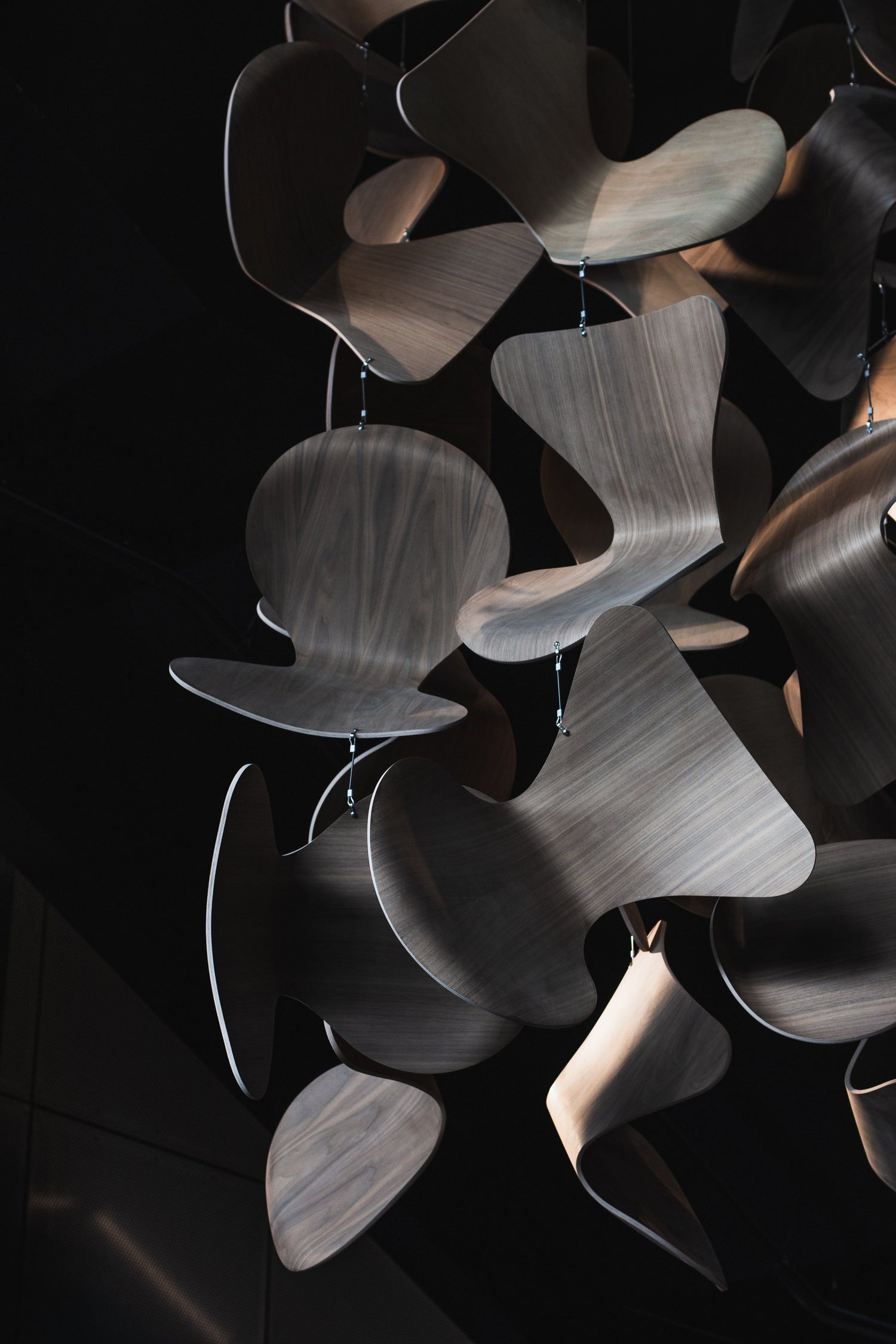PRINCIPLES OF SCANDINAVIAN DESIGN
The dynamic world of Scandinavian design is evolving, as creators strive to define the essence of New Nordic Design. Amidst the prolific legacy of design titans from this region, there's a burgeoning desire to establish a unique identity.
The present-day fascination with Scandinavian aesthetics sometimes overshadows the individuality of current designers and architects. The wealth of design heritage – a blend of heroic figures and iconic creations – can be an intimidating prospect for emerging talent.
Interestingly, the conversation around how this fresh wave of designers interact with their heritage is often overlooked. For instance, Cecilie Manz, a prominent contemporary Danish designer, admitted that this rich legacy can be a 'double-edged sword.'
Manz reflects, "We have an abundant history to consider, but it's challenging to carve out your own niche."
There's been considerable discussion about a 'new chapter' in the tale of Scandinavian style and a clear departure from the principles of mid-century modern design. Yet, there's minimal evidence of a significant shift in narrative.
So, what elements truly distinguish New Nordic design? What aspects can young designers push against, especially when the ideals of the 'Golden Age' of design remain just as pertinent today?
In this article, we delve into the intricacies of the evolving Scandinavian design landscape, exploring the unique trajectories of emerging designers, and analyzing the current trends shaping New Nordic design.
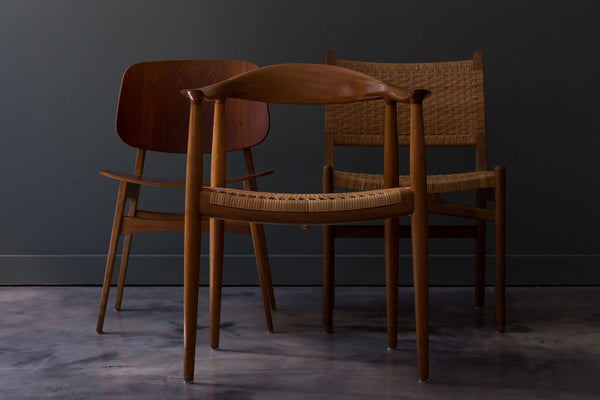 HANS JØRGEN WEGNER'S CH31 AND THE CHAIR AND BØRGE MOGENSENS BM155
HANS JØRGEN WEGNER'S CH31 AND THE CHAIR AND BØRGE MOGENSENS BM155
The Scandinavian Modern design aesthetic, originating from the 1950s, is known for its functionalism, democratic values, and natural elements. This design principle, synonymous with the Scandinavian aesthetic, is tailored to accommodate life's practicalities, emphasising functionality over the designer's ego.
As the foundation of Scandinavian Modern design, functionalism focuses on how a product will be used. The motivation behind functional design lies in serving the user, rather than showcasing a designer's creative prowess.
Another significant factor influencing this design aesthetic is the socio-political environment of the Nordic region, encapsulated in the term 'democratic design'. Scandinavian Modern design is reflective of the Nordic Model of Social Democracy, underpinned by the 'Law of Jante'. This concept emphasises collective welfare over individual superiority, leading to free education, healthcare, and other societal benefits.
Furniture companies like FDB in Denmark, under the leadership of Børge Mogensen in 1945, were among the first to infuse their designs with a socialist ethos. Rather than striving for exclusivity, FDB aimed for a collective vision, crafting designs "of the people, for the people".
Finally, the organic modernism pioneered by Alvar Aalto and Arne Jacobson forms the third pillar of Scandinavian Modern design – 'natural'. Characterised by a preference for local materials and an appreciation for craftsmanship, Scandinavian designs were considered as testament to the artist's mastery over the region's rugged landscapes.
In essence, Scandinavian Modern design from the 1950s centres around function, democracy, and nature, and continues to influence contemporary design today.
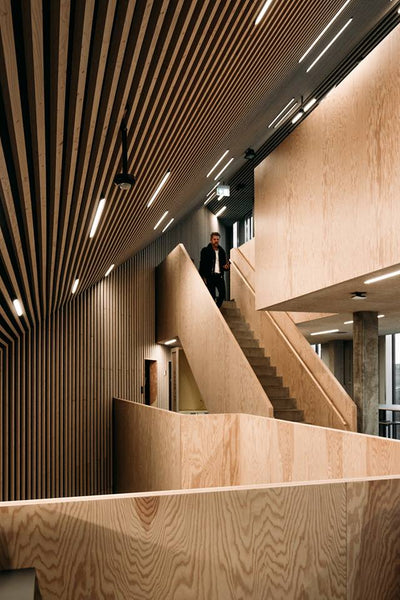
COBE ARCHITECTS CONTEMPORARY TAKE ON ORGANIC MODERNISM AT THE NEW TINGBJERG LIBRARY ON THE OUTSKIRTS OF COPENHAGEN (PHOTO BY ZANE KRAUJINA)
NEW NORDIC DESIGN PRINCIPALS
Functional | Hygge
In this New Nordic era, functionality has been interwoven with the concept of Hygge (pronounced “Hoog-ah”). This is the Danish and Norwegian word that has been proliferated globally and roughly translated into English as cosiness.
During the long and dark Scandinavian winters, a cosy and functional home is not simply an aesthetic choice but a necessity. Scandinavians simply spend more time in the company of their furniture than those in other more temperate climates.
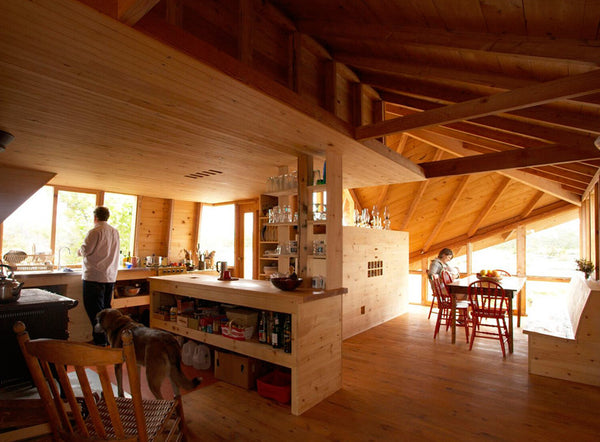
THE WARMTH OF WOODEN INTERIOR ADDS HYGGE (PHOTO COURTESY OF STIKNORD)
Scandinavian design stands out for its thoughtful blend of aesthetics and purpose. The region's top designers don't merely focus on creating attractive objects; they also prioritize how those objects function in their intended spaces and the overall ambiance they create.
The principle of 'good' design in Scandinavian philosophy extends beyond mere visual appeal. It acknowledges that domestic products are regularly used and thus, their valuation is intrinsically tied to their practicality. This aspect is especially relevant today, as successful Scandinavian designers consider not only the object itself but also its interaction with the surrounding space.
Scandinavian design has also adeptly responded to the unpredictable Nordic weather, crafting products that are adaptable and climate-responsive. This approach, originally a reaction to the region's fluctuating climate, has gained prominence on the international stage due to the increasing unpredictability of global weather patterns driven by human impact.
Now more than ever, the flexibility and adaptability of design are crucial. As such, Nordic design, with its focus on mutability, is reaping benefits on the global platform.

THE COLD AND GLOOMY NUANCES OF A LONG SCANDINAVIAN WINTER (PHOTO COURTESY OF STIKNORD)
Democratic | Affordable
The two Scandinavian brands that have most successfully crossed borders have the democratic tenet woven into their DNA.
Both Swedish furniture giant IKEA and more recently Danish design company HAY espouse a mission that mimics that established by FDB in the post-war era - that well designed products should not be a privilege.

HAY HOUSE IN COPENHAGEN (PHOTO COURTESY OF HAY)
IKEA’s ‘Democratic Design’ line openly leant into the international image of the Scandinavian political model. This fed the idea of the Scandinavian model as being an antidote to growing the wealth disparity in other countries.
Design theorist Kjetil Fallan partly attributes the rise in demand for Scandinavian design in America to the 2008 financial crisis and a renewed interest in the Scandinavian welfare model. In this way, a wander through an IKEA showroom became a taste of the Nordic social model.
Natural | Sustainable
Scandinavian Modern’s championing of natural fibres and local materials has been described as eerily prescient of the current environmentally conscious epoch.
Designing responsibly and with ecological impact awareness is a requirement in this milieu when sustainability is the theme for nearly every international design celebration.
Loyalty to one’s landscape has been a key principle of Scandinavian design for the last 70 years. This has allowed New Nordic design to claim a pedestal on the most pressing design discourse and lead the world in eco-design innovation.
BURDEN OR PRIVILEGE?
Designing in Scandinavia today implies navigating a world filled with ghosts - the lingering presence of the masters of Scandinavian Modern who established the regional brand's legacy.
Knud Erik Hansen, third-generation CEO of the Danish furniture brand Carl Hansen & Søn, accurately described the dilemma faced by Scandinavian designers: torn between moving forward and honouring the past. According to Hansen, designers are drawn towards the comforting memories of childhood spent in grandparents' or parents' homes - times associated with peace, safety, and happiness. As such, these nostalgic feelings cultivate a somewhat unconscious attachment to their design origins.
In response to this temporal tension, many Nordic brands have chosen to incorporate both eras into their philosophy, dividing their catalogues between new works and 'legacy' or 'classics' collections.
A case in point is the Danish furniture brand Republic of Fritz Hansen, whose portfolio is a mix of reissued classic pieces from their 150-year-old history and works by contemporary designers. Interestingly, when placed side-by-side, it's challenging to differentiate between the classics and contemporary pieces. This blurring of timelines underscores that these designs continue to operate within the same conventions, deeply rooted in shared landscapes.
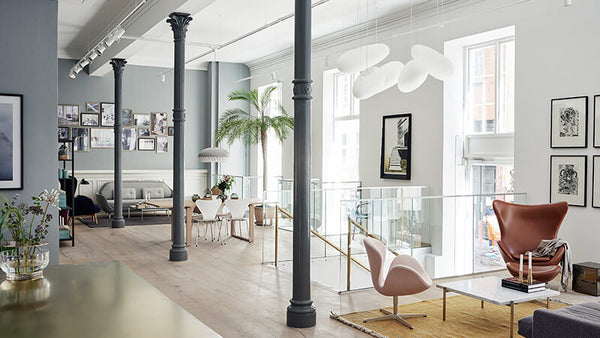
REPUBLIC OF FRITZ HANSEN SHOWROOM IN COPENHAGEN (PHOTO COURTESY OF REPUBLIC OF FRITZ HANSEN
What was established in the 1950's was a philosophy linked to environment rather than time, and there was no expiry date attached to functionalist, democratic and natural design.
What is new about New Nordic design is its practitioner’s ability to simultaneously look backward while moving forward. This has created a dynamic and innovative design scene that has managed to reinvent itself while reaping the benefits of its heritage.
---
Check out Evolution for design that pays homage whilst making way for the new.









